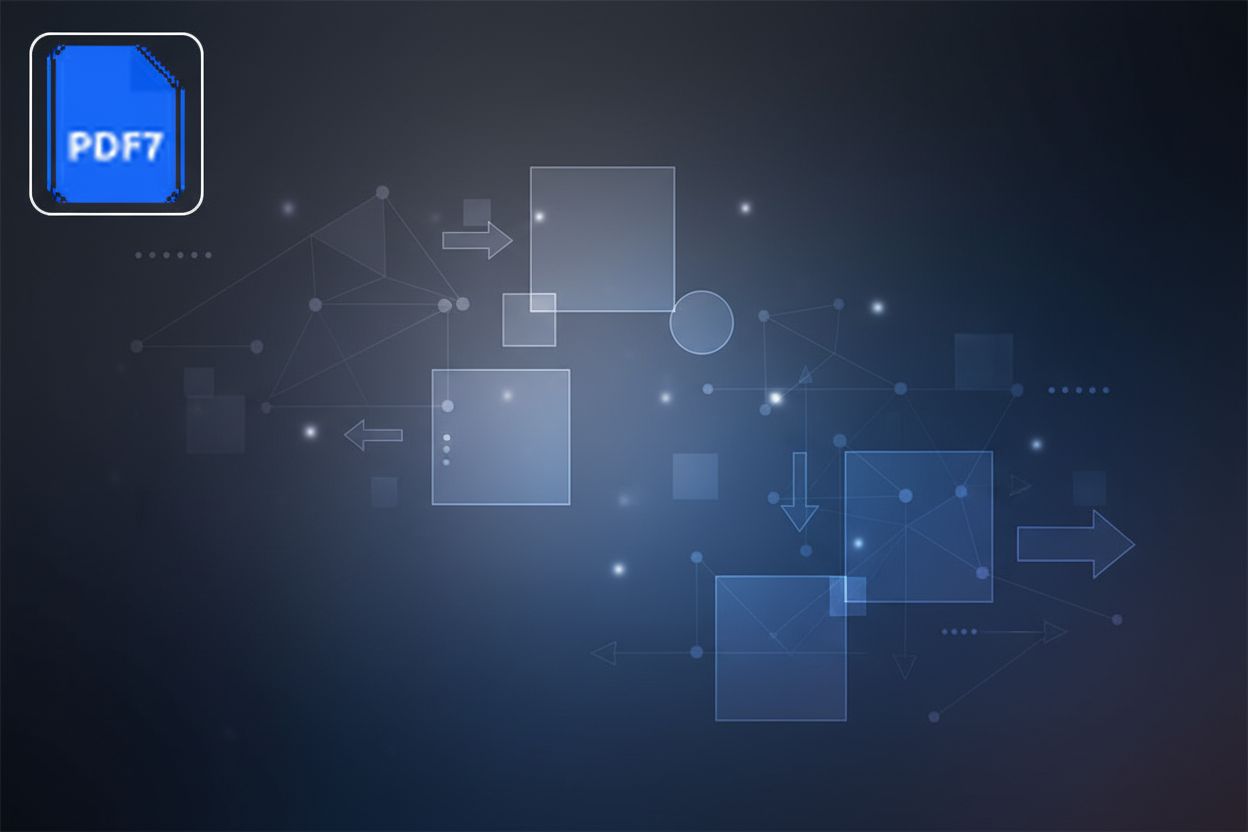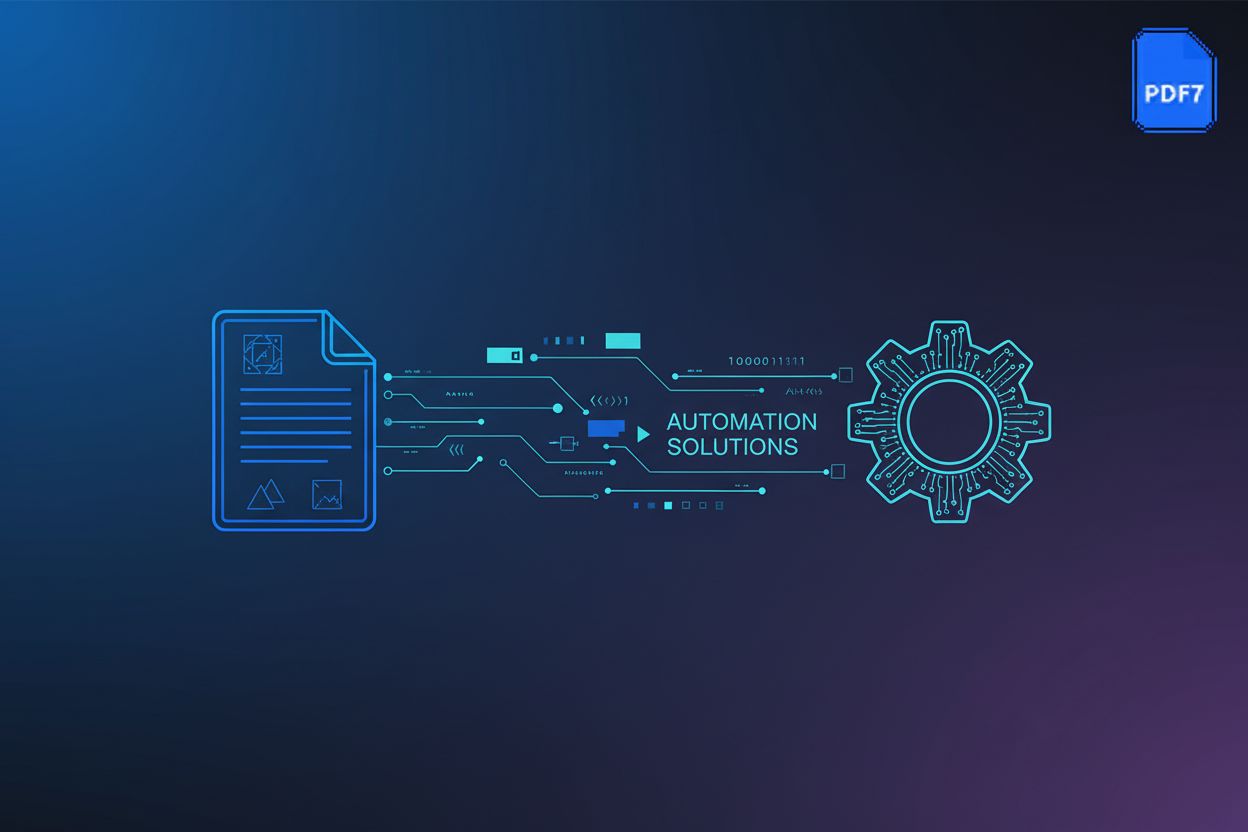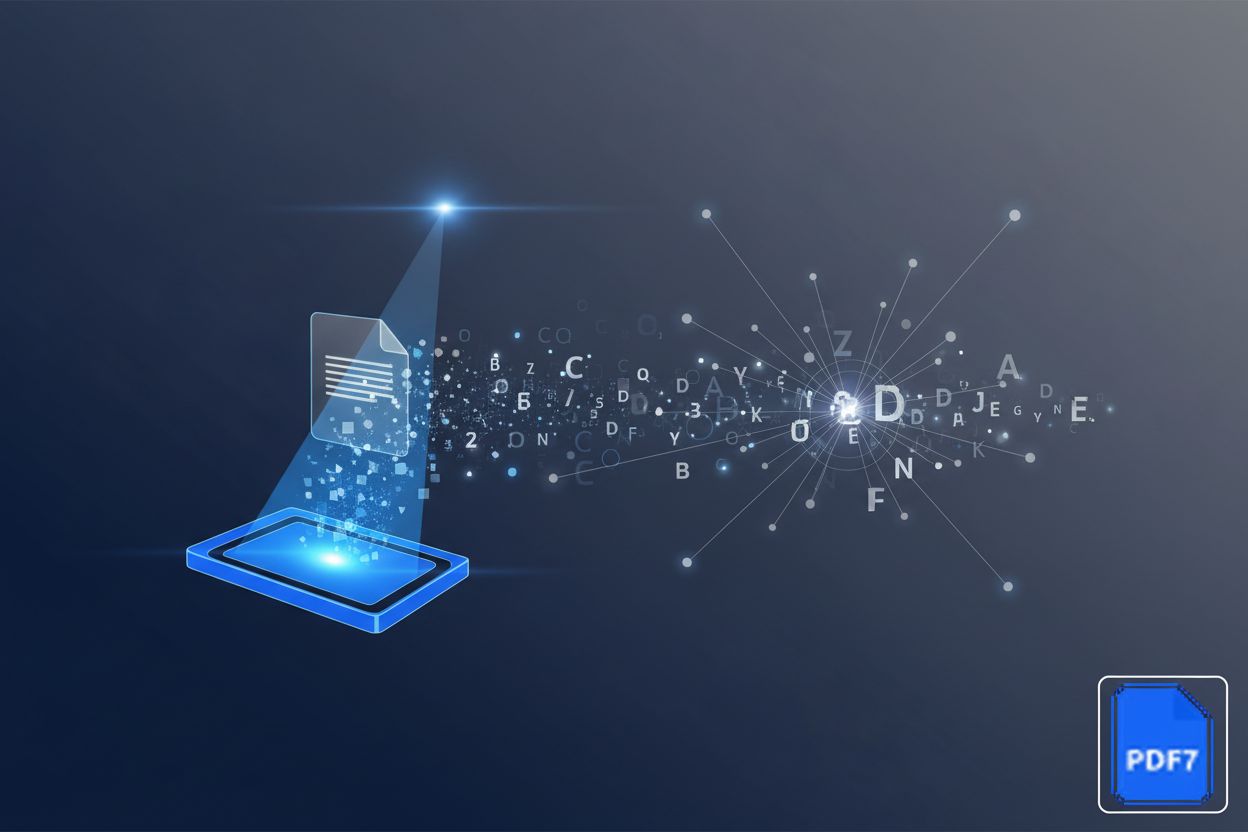Mastering PDF Content Redaction: A Comprehensive Guide for Professionals and Students
TL;DR
Understanding the Importance of PDF Redaction
Did you know that a single data breach can cost a company millions of dollars (The True Cost of a Data Breach in 2025: Latest Statistics and Analysis)? PDF redaction is a critical process for protecting sensitive information and ensuring compliance with privacy regulations.
Redaction is more than just blacking out text; it's the permanent removal of sensitive information from a document. This ensures that the data is not visible, searchable, or recoverable. Here's why it's so important:
- Protecting Personally Identifiable Information (PII): Redaction safeguards sensitive data like social security numbers, addresses, and financial details. (Redaction in Legal Documents - Green Filing) For instance, healthcare providers redact patient information in medical records to comply with HIPAA regulations. (HIPAA Redaction Best Practices To Prevent Violations)
- Complying with data privacy regulations (e.g., GDPR, HIPAA): Regulations like GDPR and HIPAA mandate the protection of personal data. Redaction helps organizations meet these requirements by ensuring that sensitive information is removed from documents before they are shared.
- Preventing data breaches and legal liabilities: Failure to protect sensitive data can result in costly data breaches and legal penalties. Redaction minimizes this risk by permanently removing confidential information from documents.
PDF redaction is essential in various industries and scenarios. Here are a few examples:
- Legal documents and court filings: Law firms redact sensitive client information, witness details, and confidential case strategies.
- Financial reports and statements: Financial institutions redact account numbers, credit card details, and other financial data to protect customers' privacy.
- Medical records: Healthcare providers redact patient names, social security numbers, and medical history to comply with HIPAA.
- HR documents: Companies redact employee performance reviews, salary information, and disciplinary actions to maintain confidentiality and comply with employment laws.
Understanding the tools and techniques for effective PDF redaction is the next crucial step. The following section will explore the essential tools needed for redacting PDFs.
Traditional vs. Modern Redaction Methods
Did you know that relying on outdated redaction methods can leave sensitive data vulnerable? Let's explore the differences between traditional and modern redaction methods, highlighting the importance of accuracy and efficiency.
Traditional redaction often involves manually blacking out text with markers or using basic image editing tools. While seemingly straightforward, this approach has significant drawbacks.
- Time-consuming and error-prone: Manual redaction is a slow process, especially for large documents. The risk of human error is high, potentially leading to sensitive information being overlooked.
- Risk of overlooking sensitive information: It's easy to miss instances of sensitive data when manually reviewing documents. For example, a social security number might appear in multiple places and be missed in one instance.
- Not suitable for large documents: Manual redaction becomes impractical for documents with hundreds or thousands of pages. The time and effort required are simply too great.
Manual methods also don't permanently remove the underlying text. The "blacked out" information can often be recovered by copying and pasting the content into another document or using simple techniques to reveal the original text.
Modern redaction software offers a more secure and efficient solution. These tools use advanced algorithms to find and remove sensitive information permanently.
- Automated search and redaction capabilities: Redaction software can automatically search for specific keywords, patterns, or phrases within a document. This automation significantly reduces the time and effort required for redaction, while also improving accuracy. For example, you can set it up to find all occurrences of a specific phrase, like a credit card or policy number.
- Permanent removal of content: Unlike manual methods, software-based redaction permanently removes the selected content from the PDF. This ensures that the information cannot be recovered or accessed by unauthorized users.
- Audit trails for compliance: Many redaction tools provide audit trails that track all redaction activities. These audit trails are essential for demonstrating compliance with data privacy regulations, such as GDPR and HIPAA.
Choosing the right redaction tool is crucial for maintaining data security and complying with regulations. The next section will explore the essential tools needed for redacting PDFs effectively.
Step-by-Step Guide to Effective PDF Redaction
Did you know that improperly applied redaction can lead to severe data breaches? Follow these steps to ensure your PDF redaction process is thorough and effective.
The first step in effective PDF redaction is identifying what constitutes sensitive data. This includes Personally Identifiable Information (PII) like social security numbers, addresses, phone numbers, and financial data. It's also crucial to consider other confidential information such as trade secrets, legal strategies, and internal communications.
- Defining what constitutes sensitive data: Understand the legal and regulatory requirements that dictate what information must be protected. For example, healthcare organizations must comply with HIPAA, which mandates the protection of patient health information.
- Using keywords and patterns to identify information: Employ automated tools to search for specific keywords, phrases, or patterns that indicate sensitive data. In the financial sector, this might include account numbers, credit card numbers, or transaction details. Regular expressions can be particularly useful for identifying patterns like phone numbers or email addresses.
- Understanding context to ensure complete redaction: Consider the context in which information appears. A seemingly innocuous piece of data might become sensitive when combined with other information. For instance, a person's name might not be sensitive on its own, but when paired with their medical condition, it becomes PII.
Once you've identified the sensitive information, the next step is to apply redaction marks correctly. This involves using appropriate tools and techniques to ensure the information is permanently removed from the document.
- Choosing the right redaction tools: Select redaction software that offers secure and permanent redaction capabilities. Ensure the tool complies with industry standards and regulations.
- Ensuring the redacted area is completely covered: When applying redaction marks, make sure the entire sensitive area is fully covered. Even a small sliver of unredacted text can expose the underlying data.
- Verifying the permanent removal of underlying text: After applying redaction marks, verify that the underlying text has been permanently removed. Some tools only overlay a black box without actually deleting the data, which can be a major security risk.
The final step is to verify and validate that the redaction process was successful. This involves reviewing the redacted document and using PDF analysis tools to confirm that the sensitive information has been permanently removed.
- Reviewing the redacted document for accuracy: Carefully review the redacted document to ensure that all sensitive information has been properly redacted. This is a crucial step to catch any errors or omissions.
- Using PDF analysis tools to confirm content removal: Utilize PDF analysis tools to examine the underlying code of the document and verify that the redacted content is no longer present. These tools can detect hidden layers or metadata that might contain sensitive information.
- Testing the redacted PDF to prevent data leaks: Test the redacted PDF by attempting to copy and paste text from the redacted areas or searching for specific keywords. If the redaction was successful, these actions should not reveal any sensitive information.
Following these steps will help you ensure that your PDF redaction process is effective and secure. The next section will cover the essential tools needed for redacting PDFs.
Choosing the Right PDF Redaction Tools
Choosing the right PDF redaction tool is vital for protecting sensitive information. But with so many options available, how do you select the one that best fits your needs?
When choosing a PDF redaction tool, evaluate its search and redaction capabilities. The best tools offer automated search functions that can quickly locate and redact specific keywords, phrases, or patterns within a document.
- Look for tools that support regular expressions for identifying complex patterns like social security numbers or credit card numbers. For instance, a law firm dealing with numerous legal documents would benefit from a tool that can automatically find and redact all instances of client names and addresses.
- Consider the tool's ability to handle different file formats. While PDF is the primary concern, the tool should also support other common document formats like Word, Excel, and image files. This is especially important for organizations that handle a variety of document types.
- Ensure the tool complies with industry standards such as GDPR, HIPAA, and other relevant regulations. Compliance features like audit trails and secure redaction methods are crucial for maintaining data privacy and avoiding legal liabilities.
The choice between open source and commercial redaction software depends on your organization's specific needs and resources. Each comes with its own set of advantages and disadvantages.
- Cost considerations are a major factor. Open source software is often free to use, which can be attractive for small businesses or organizations with limited budgets. However, commercial software typically includes support and maintenance, which can save time and resources in the long run.
- Consider security and support. Commercial software usually offers dedicated support teams and regular security updates, providing a more secure and reliable redaction process. Open source software relies on community support, which may not be as responsive or comprehensive.
- Ease of use and features also differ. Commercial redaction tools often have user-friendly interfaces and advanced features like batch redaction and optical character recognition (OCR). Open source options may require more technical expertise to set up and use effectively.
Choosing the right tool ensures that your redaction process is both effective and efficient. Next, we'll explore practical examples of PDF redaction in various industries.
Best Practices for Secure PDF Handling and Redaction
Did you know that a weak password is the easiest entry point for cyberattacks? Securing your PDFs involves more than just redaction; it requires robust data encryption and strict access control.
One of the first lines of defense is protecting PDFs with passwords. This prevents unauthorized users from even opening the document.
- Use strong, unique passwords for each sensitive PDF. A strong password should include a combination of uppercase and lowercase letters, numbers, and symbols.
- Consider using password management tools to securely store and manage your passwords. This ensures you don't reuse the same password across multiple documents, reducing the risk of compromise.
Restricting access to sensitive documents is also crucial. Control who can view, edit, or print your PDFs.
- Implement user authentication and authorization mechanisms. This ensures that only authorized personnel can access sensitive information.
- For instance, in a healthcare setting, only doctors and nurses should have access to patient medical records. Use access controls to limit access based on roles and responsibilities.
Using encryption to secure data in transit and at rest adds an extra layer of protection. Encryption scrambles the data, making it unreadable to anyone without the decryption key.
- Use PDF software that supports strong encryption algorithms, such as AES (Advanced Encryption Standard). AES 256-bit encryption is widely considered secure for protecting sensitive data.
- When sending PDFs via email or storing them on cloud services, ensure that the data is encrypted during transit and while stored on the server. This protects the data from potential interception or unauthorized access.
It's easy to overlook, but regularly updating your redaction software is essential for maintaining a secure redaction process. Outdated software can contain vulnerabilities that could be exploited by malicious actors.
- Patching security vulnerabilities is a primary reason to keep your software updated. Software vendors regularly release updates to address known security flaws. Applying these patches promptly helps protect your systems from potential attacks.
- Accessing new features and improvements is another benefit of regular updates. Software updates often include new features that enhance the redaction process, such as improved search algorithms or better support for different file formats.
- Ensuring compatibility with evolving standards is also important. Data privacy regulations and industry standards are constantly evolving. Regularly updating your redaction software ensures that it remains compliant with the latest requirements.
By prioritizing data encryption, access control, and software updates, you can significantly enhance the security of your PDF redaction process.
Now that we've covered best practices for secure PDF handling, let's dive into practical examples of PDF redaction across various industries.
Leveraging Online PDF Tools for Redaction
Did you know that online PDF tools can simplify redaction, making it accessible to anyone with an internet connection? Let's explore how these tools can streamline your document redaction process.
PDF7 offers a suite of tools designed to make PDF editing straightforward. These tools include PDF merging, rotating, and compression, all accessible online without requiring any software downloads. This accessibility is a game-changer for users who need quick and easy PDF solutions PDF7.
PDF7 supports various file conversions, such as JPG to PDF, Word to PDF, and PDF to JPG. This versatility makes it suitable for different document needs. For instance, you can easily convert a scanned image to a PDF or transform a Word document into a more secure, non-editable format.
PDF7 prioritizes user convenience and security, ensuring that its tools are easy to use while protecting your document data. The platform’s commitment to security means you can confidently use its features without worrying about data breaches or privacy issues.
Online PDF editors offer several advantages for redaction, making them a practical choice for many users.
- Accessibility from any device is a significant benefit. Whether you're using a desktop, laptop, or tablet, you can access these tools as long as you have an internet connection. This is particularly useful for professionals who need to redact documents on the go.
- No software installation required is another key advantage. Unlike traditional software, online PDF editors eliminate the need for lengthy installations and updates. This saves time and resources, allowing you to focus on the task at hand.
- Cost-effective solutions for occasional redaction needs make online PDF editors an attractive option. Many online tools offer free or low-cost plans for users who only need to redact documents occasionally. This can be more economical than purchasing expensive software licenses.
Online PDF tools like PDF7 provide practical and efficient solutions for document redaction, offering accessibility, convenience, and cost-effectiveness.
Next, we'll explore practical examples of PDF redaction across various industries.
Advanced Redaction Techniques and Considerations
As you finalize your redaction, remember that overlooking hidden data can be costly. Thoroughness ensures true data protection.
- Metadata Removal: Strip author names, dates, and software versions. For example, legal firms must remove metadata from court filings to protect client confidentiality.
- Hidden Layers: Detect and redact hidden text or images. In retail, this prevents exposure of pricing strategies embedded in product catalogs.
- Document Integrity: Verify that redaction doesn't corrupt the file. Healthcare providers need to ensure medical records remain accessible after redaction for continuity of care.
With these techniques, your documents are truly secure.









